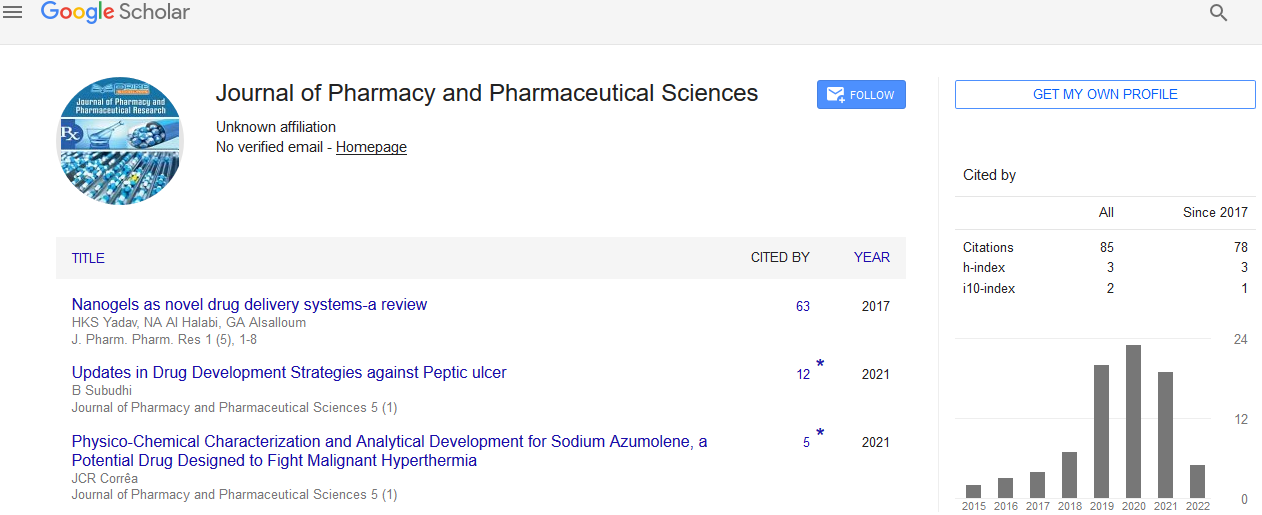Opinion - (2024) Volume 8, Issue 4
Pharmacoeconomics: Balancing Cost, Value, and Patient Outcomes in Modern Healthcare
Caris Sima*
Department of Pharmacy, Aristotle University of Thessaloniki, Australia
*Correspondence:
Caris Sima,
Department of Pharmacy, Aristotle University of Thessaloniki,
Australia,
Email:
Received: 02-Dec-2024, Manuscript No. IPIPR-25-22264 ;
Editor assigned: 04-Dec-2024, Pre QC No. IPIPR-25-22264 (PQ);
Reviewed: 18-Dec-2024, QC No. IPIPR-25-22264 ;
Revised: 23-Dec-2024, Manuscript No. IPIPR-25-22264 (R);
Published:
30-Dec-2024, DOI: 10.21767/ipipr.8.4.35
Introduction
Pharmaco-economics is a specialized field within health economics that evaluates the cost-effectiveness of pharmaceutical products and services. It serves as a critical tool in healthcare decision-making, balancing clinical benefits with financial costs. As the demand for healthcare services grows, the importance of pharmaco-economics becomes increasingly evident in optimizing resource allocation and ensuring the sustainability of healthcare systems worldwide. This article explores the definition, importance, methodologies, applications, and challenges of pharmaco-economics, providing a thorough understanding of its role in modern healthcare. Pharmaco-economics combines principles of economics and pharmacology to assess the value of drug therapies. It examines both the costs (direct, indirect, and intangible) and the outcomes (clinical, economic, and humanistic) associated with pharmaceutical interventions. Direct costs include the expenses for medical services, drugs, and hospital stays.
Description
Pharmaco-economics evaluates their economic viability alongside clinical outcomes. Governments and regulatory bodies use pharmaco-economic data to determine pricing, reimbursement policies, and formulary decisions. Pharmacoeconomics ensures that resources are directed toward treatments that provide the highest value. By demonstrating costeffectiveness, pharmaco-economics can help patients access necessary therapies within constrained budgets. Pharmacoeconomic evaluations employ various methodologies to assess cost-effectiveness. The most commonly used approaches includes compares costs of interventions that yield equivalent outcomes. Comparing generic drugs to branded equivalents when clinical effectiveness is the same. Only applicable when therapeutic equivalence is established. Compares the cost per unit of clinical outcome, such as life-years gained or disease-free days. Incremental Cost-effectiveness Ratio (ICER). Evaluating a new cancer drug by comparing its cost per additional life-year gained with standard therapy. Focuses on quality-adjusted life years to evaluate both the quantity and quality of life. Cost per QALY. Translates both costs and benefits into monetary terms for direct comparison.
Conclusion
Early-phase modeling predicts the potential cost-effectiveness of pipeline drugs. Hospitals and insurers rely on pharmacoeconomic data to decide which drugs to include in formularies. Ensures that approved therapies provide significant value to patients and the healthcare system. Pharmaco-economics is integral to HTA processes, influencing decisions on reimbursement and market access. Agencies like NICE (UK), CADTH (Canada), and PBAC (Australia) incorporate pharmacoeconomic evaluations in policy making. Pharmaco-economic evidence is critical for setting drug prices and negotiating reimbursement rates with insurers and governments. Pharmaco-economic studies inform evidence-based guidelines and protocols, promoting cost-effective prescribing practices. In low and middle-income countries, pharmaco-economics helps prioritize interventions for infectious diseases and public health programs.
Acknowledgement
The author is grateful to the journal editor and the anonymous reviewers for their helpful comments and suggestions.
Conflict Of Interest
The author declared no potential conflicts of interest for the research, authorship, and or publication of this article.
Citation: Sima C (2024) Pharmaco-economics: Balancing Cost, Value, and Patient Outcomes in Modern Healthcare. J Pharm Pharm Res. 8:35.
Copyright: © 2024 Sima C. This is an open-access article distributed under the terms of the Creative Commons Attribution License, which permits unrestricted use, distribution, and reproduction in any medium, provided the original author and source are credited.

